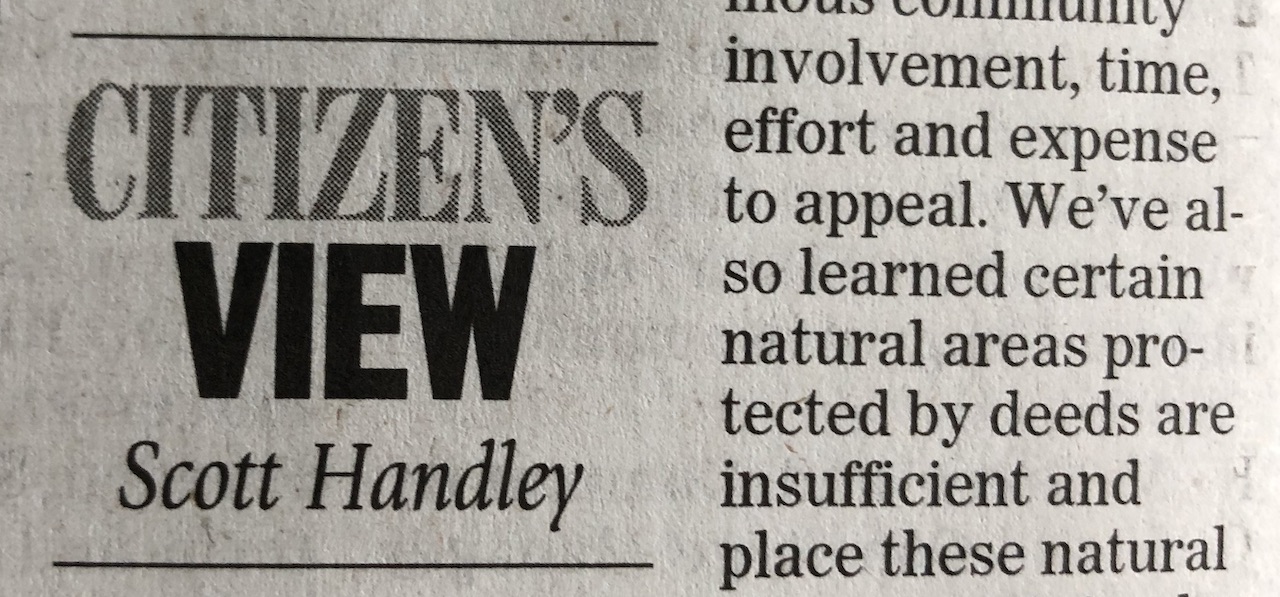Scott Handley, a Lake Oswego resident and the chief petitioner for the community-led prospective initiative 2020IN-1, outlines the necessity to let the community decide and vote on sensible legal protections for Lake Oswego’s natural parks.
We have an opportunity to codify protections for 15 additional City-designated natural parks in nine neighborhoods
Lake Oswego is known as the “village in a park,” a place of physical beauty and respite from the expanding urbanized regions surrounding it. Our extensive tree canopy is a result of investment by the community in its natural parks, open spaces and environmental stewardship groups. We have a strong interest in protecting these elements that contribute to the natural, cultural and aesthetic health of our community.
Recent events reminded us that stewardship is not enough. We’ve learned that Lake Oswego code allows for “conditional uses” in natural habitats that are inconsistent with preserving them as natural areas — a reactive process requiring enormous community involvement, time, effort and expense to appeal. We’ve also learned certain natural areas protected by deeds are insufficient and place these natural areas at risk for development. For decades, our City’s adopted park plans have outlined steps to codify protections for these natural areas (e.g. heritage sites landscapes) with little substance to guarantee protection. Until we have a legal instrument that codifies the community’s intent to preserve these natural areas, some will see opportunity to develop them.
In 1978, a community-led ballot initiative to “preserve Springbrook Park as a natural area” passed overwhelmingly, 3-1. This initiative enacted “Chapter X – Park Development Limitation” in the Lake Oswego Charter. This initiative prevented developing Springbrook Park into a major athletic facility. Recently, Chapter X protected Springbrook when the City considered expanding the Tennis Center into this natural area. Springbrook is the ONLY natural park with Charter protections.
Now, we have an opportunity to codify protections for 15 additional City-designated natural parks in nine neighborhoods. Our community-led initiative, 2020IN-1, takes a proactive approach by amending Chapter X to include these natural areas. It strengthens limitations on development that is incompatible and inconsistent with their natural conditions. It allows improvements to maintain safe and healthy ecosystems for wildlife, flora and fauna to thrive in their natural habitat and for residents to enjoy. It prohibits commercial logging. It expands the methods for including more natural parks in the future. It costs taxpayers NOTHING.
These 15 natural parks are small and intertwined into the fabric of our neighborhoods and community. Their ecosystems are host to abundant wildlife and give many in the community refuge from the increasingly developed world. Several of these natural areas were gifts to our community by families who saw our innate human desire to develop these lands, and they wished them to remain forever wild. The community should be guaranteed these pockets of nature are left to remain in their natural condition. The community preserved Springbrook Park; we must now preserve these 15 natural parks.
The initiative process is our democratic mechanism that allows the community to participate in legislating rules governing our community. While the City-assigned ballot title to this initiative is imperfect – “Restricts improvements on certain Lake Oswego park properties,” our Charter text is crystal clear. It protects 15 Lake Oswego natural parks as nature preserves limiting development that is inconsistent and incompatible with their natural conditions.
We need you! We need 4,365 Lake Oswego registered voter signatures to place our natural park preservation initiative on the ballot and allow our community to vote. Download the petition, print, sign, and send: https://www.loveloparks.org/petition
Scott Handley is a Lake Oswego resident.

